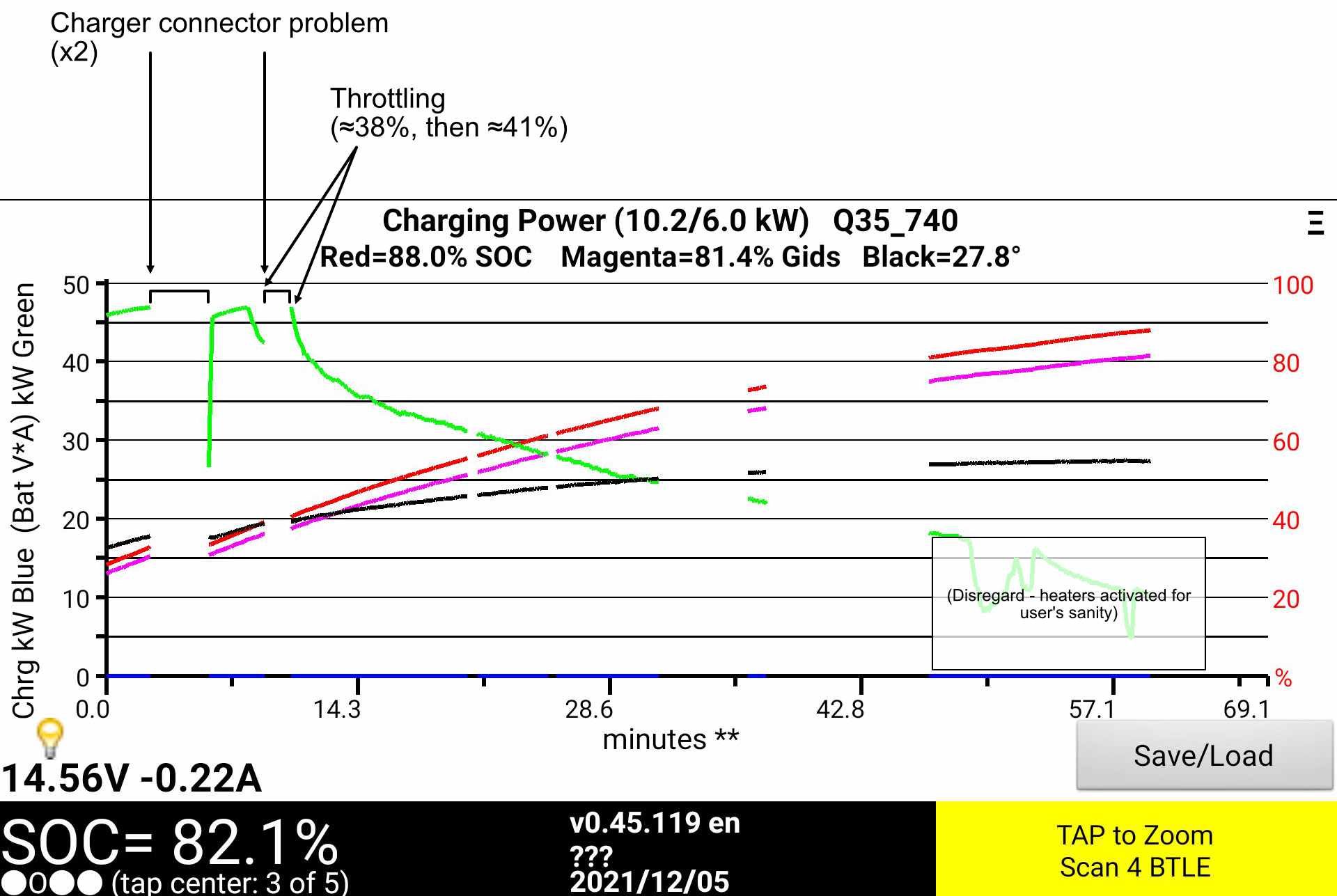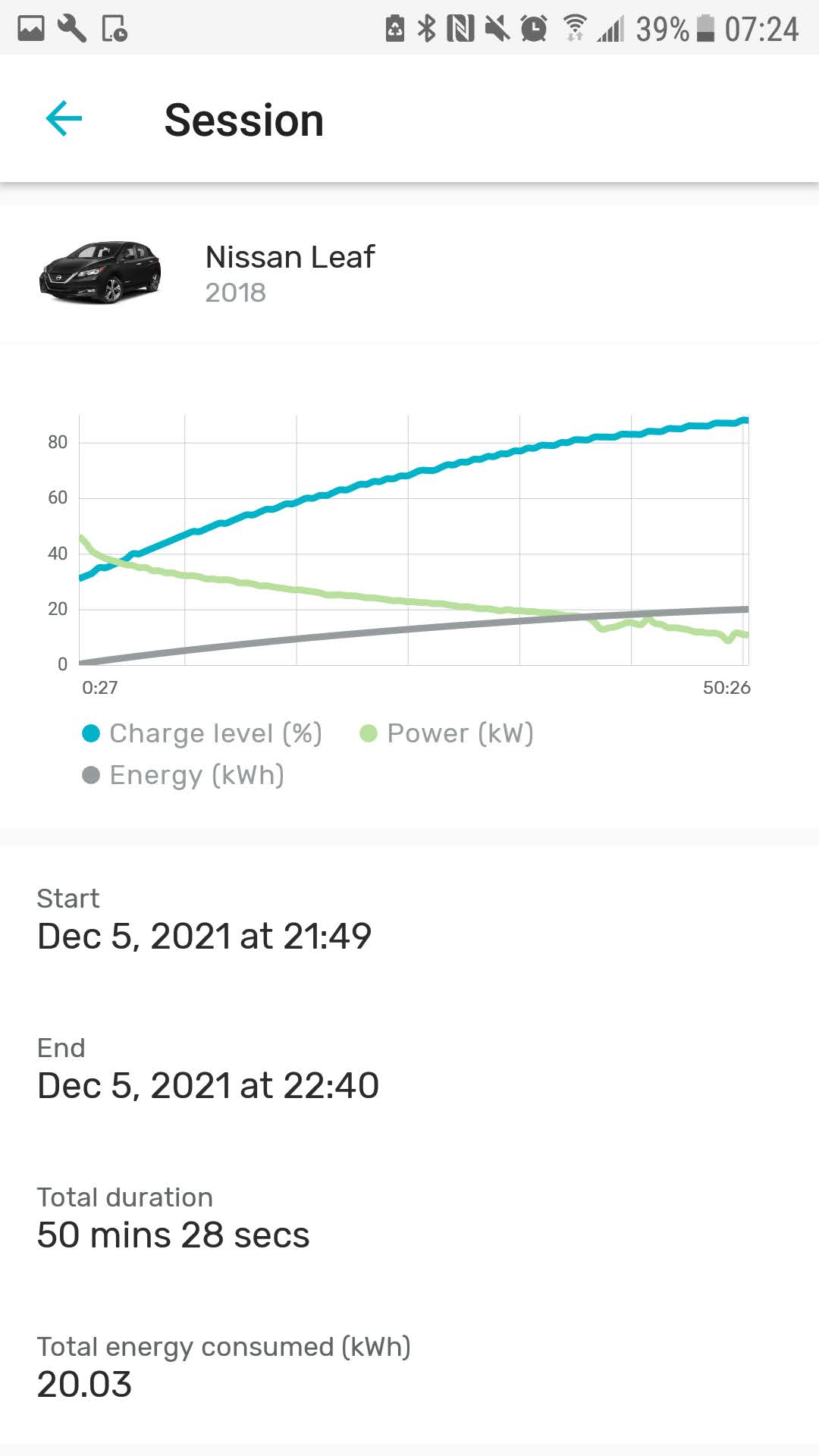illidotane
Member
I have reasons to believe that DCFC is not occuring at the maximum possible speed.
I have had the software update regarding rapidgate (NTB19-056) applied this summer. (How can I confirm this?) I have not had the chance to comprehensively test the update ever since (i.e. trace a propre full charge curve with ideal starting conditions).
Different chargers were used (Quebec region):
- Electric Circuit 50kW and higher (AddÉnergie),
- ChargePoint 125kW,
- Electric Circuit 175kW CHAdeMO (300kW CCS, ABB)
When multiples chargers were present, I am only considering charging sessions where no one else were using the other units simultaneously (i.e. if power sharing scheme were applied, they wouldn't be in effect). I've sometimes had erratic charging speeds (random variations vetween 20kW and 26kW) which I've attributed to power sharing schemes; I am disregarding these experiences for this investigation.
Pack temperature were between 0-15C (32-59F), at start (multiple different attempts). (Fall/Winter in Quebec). I am only considering single charges on a day with little to no prior driving. I am not considering multiple successive charges.
A typical charge with the above criterias would go as follow: initial ramp up to 125A (maximum speed). At 38-40%, charging speed started throttling. Throttling would continue slowly with a decay shape until 50% is reached. Then the throttling is linear and decreases steadily to 20kW.
I am knowledgeable in CC-CV charging curves for lithium packs and electricity notions (electrical engineer). I have compared my experiences with typical Leaf packs (such as this one for instance). I am expecting the knee point to be reached slightly before 60% for a typical, throttle-free charge. In my case I observe this happening more around 40%.
I am running out of ideas and am wondering if it would be worth it involving the dealer. At this point I am questioning if the dealer's intervention (NTB19-056) has anything to do wth it (i.e. the parameters were set correctly in the charging system, if that's how it's done in the NTB...)).
Any insight would be appreciated. Thanks.
Picture is a one of the charge where charging was slow. Disregard gaps as I walked away from the car or forgot to keep the car on.

I have had the software update regarding rapidgate (NTB19-056) applied this summer. (How can I confirm this?) I have not had the chance to comprehensively test the update ever since (i.e. trace a propre full charge curve with ideal starting conditions).
Different chargers were used (Quebec region):
- Electric Circuit 50kW and higher (AddÉnergie),
- ChargePoint 125kW,
- Electric Circuit 175kW CHAdeMO (300kW CCS, ABB)
When multiples chargers were present, I am only considering charging sessions where no one else were using the other units simultaneously (i.e. if power sharing scheme were applied, they wouldn't be in effect). I've sometimes had erratic charging speeds (random variations vetween 20kW and 26kW) which I've attributed to power sharing schemes; I am disregarding these experiences for this investigation.
Pack temperature were between 0-15C (32-59F), at start (multiple different attempts). (Fall/Winter in Quebec). I am only considering single charges on a day with little to no prior driving. I am not considering multiple successive charges.
A typical charge with the above criterias would go as follow: initial ramp up to 125A (maximum speed). At 38-40%, charging speed started throttling. Throttling would continue slowly with a decay shape until 50% is reached. Then the throttling is linear and decreases steadily to 20kW.
I am knowledgeable in CC-CV charging curves for lithium packs and electricity notions (electrical engineer). I have compared my experiences with typical Leaf packs (such as this one for instance). I am expecting the knee point to be reached slightly before 60% for a typical, throttle-free charge. In my case I observe this happening more around 40%.
I am running out of ideas and am wondering if it would be worth it involving the dealer. At this point I am questioning if the dealer's intervention (NTB19-056) has anything to do wth it (i.e. the parameters were set correctly in the charging system, if that's how it's done in the NTB...)).
Any insight would be appreciated. Thanks.
Picture is a one of the charge where charging was slow. Disregard gaps as I walked away from the car or forgot to keep the car on.


